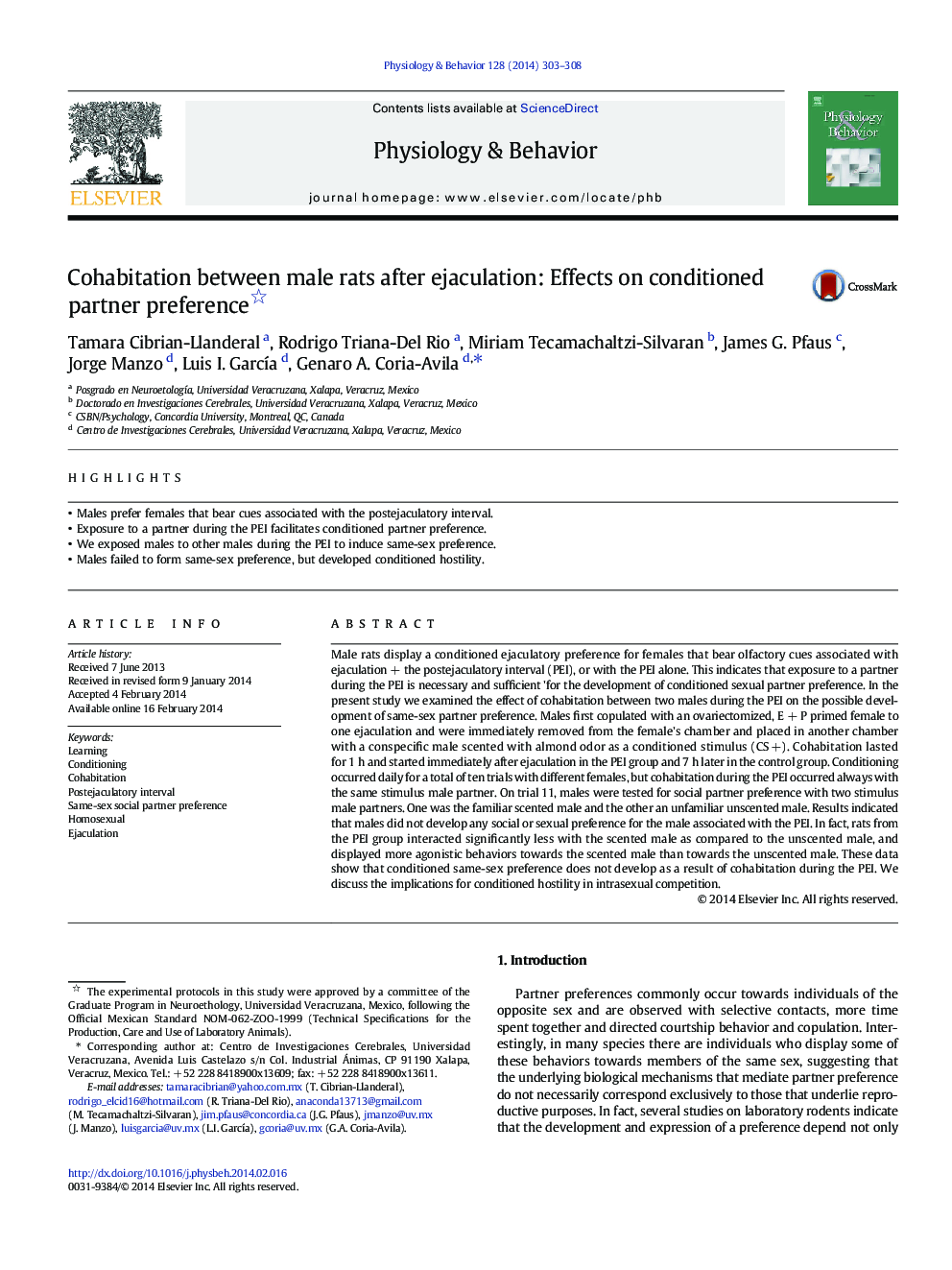| Article ID | Journal | Published Year | Pages | File Type |
|---|---|---|---|---|
| 5924494 | Physiology & Behavior | 2014 | 6 Pages |
â¢Males prefer females that bear cues associated with the postejaculatory interval.â¢Exposure to a partner during the PEI facilitates conditioned partner preference.â¢We exposed males to other males during the PEI to induce same-sex preference.â¢Males failed to form same-sex preference, but developed conditioned hostility.
Male rats display a conditioned ejaculatory preference for females that bear olfactory cues associated with ejaculation + the postejaculatory interval (PEI), or with the PEI alone. This indicates that exposure to a partner during the PEI is necessary and sufficient 'for the development of conditioned sexual partner preference. In the present study we examined the effect of cohabitation between two males during the PEI on the possible development of same-sex partner preference. Males first copulated with an ovariectomized, E + P primed female to one ejaculation and were immediately removed from the female's chamber and placed in another chamber with a conspecific male scented with almond odor as a conditioned stimulus (CS +). Cohabitation lasted for 1 h and started immediately after ejaculation in the PEI group and 7 h later in the control group. Conditioning occurred daily for a total of ten trials with different females, but cohabitation during the PEI occurred always with the same stimulus male partner. On trial 11, males were tested for social partner preference with two stimulus male partners. One was the familiar scented male and the other an unfamiliar unscented male. Results indicated that males did not develop any social or sexual preference for the male associated with the PEI. In fact, rats from the PEI group interacted significantly less with the scented male as compared to the unscented male, and displayed more agonistic behaviors towards the scented male than towards the unscented male. These data show that conditioned same-sex preference does not develop as a result of cohabitation during the PEI. We discuss the implications for conditioned hostility in intrasexual competition.
